
Keywords: new-zealand

|
Otago GE Wasp Project Violates International Gene Drive AgreementGE-Free NZ, Scoop, 2024.
Professor Dearden, Otago University, has received $11 million from the Ministry of Business, Innovation and Enterprise (MBIE) to engineer wasps using gene drive technology. He is only consulting with Māori and regulators, ignoring and side-lining the views of other concerned New ... Keywords: gene drive synthetic, invasive species, new-zealand, stoats |

|
The $11million wasp to end (hopefully) all waspsKieran Chisnall, Stuff, 2024.
A new project to eradicate wasps, which cost the country millions of dollars, has begun in Dunedin. The key to that $11million project would be a genetically altered wasp, capable of destroying wasps colonies from the inside. Professor Peter Dearden, Genomics Aotearoa ... Keywords: gene drive synthetic, invasive species, new-zealand, stoats |

|
Gene drives – maybe not a silver bullet, but a bullet nonethelessJenny Leonard, New Zealand's Biological Heritage, 2023.
A gene drive is both a natural process and a genetic engineering technology where a gene is promoted or favoured during reproduction—instead of there being a “chance” of an offspring inheriting a gene, gene drives almost guarantee that the offspring (and subsequent ... Keywords: gene drive synthetic, invasive species, new-zealand, stoats |

|
Gene drives for invasive wasp control: Extinction is unlikely, with suppression dependent on dispersal and growth ratesP. J. Lester, D. O'Sullivan and G. L. W. Perry, Ecological Applications, 2023.
Abstract Gene drives offer a potentially revolutionary method for pest control over large spatial extents. These genetic modifications spread deleterious variants through a population and have been proposed as methods for pest suppression or even eradication. We examined the ... Keywords: gene drive synthetic, invasive species, new-zealand, stoats |

|
The attitudes of young adults towards mammalian predator control and Predator Free 2050 in Aotearoa New ZealandL. Dickie and F. Medvecky, Australasian Journal of Environmental Management, 2023.
Predator Free 2050 (PF2050) is an ambitious goal that aims to remove three types of invasive mammals from New Zealand by 2050. It will require a significant amount of funding, research, and support. Young adults will have an important role to play for this programme to be ... Keywords: gene drive synthetic, invasive species, new-zealand, stoats |
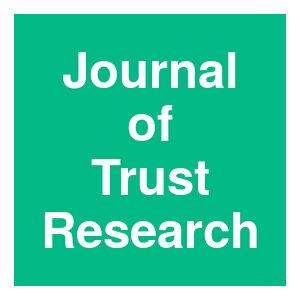
|
Trust in science and scientists: Effects of social attitudes and motivations on views regarding climate change, vaccines and gene drive technologyH. G. W. Dixson, A. F. Komugabe-Dixson, F. Medvecky, J. Balanovic, H. Thygesen and E. A. MacDonald, Journal of Trust Research, 2023.
Trust in science and scientists (TSS) is an increasingly important topic with respect to how science is applied within society. However, its role regarding specific issues may vary depending upon other psychosocial factors. In this study, we investigated how trust interacts with ... Keywords: gene drive synthetic, invasive species, new-zealand, stoats |

|
Should NZ use contentious gene tech in our war on pests?J. Morton, NZ Herald, 2022.
Gene-altering technology could offer “breakthrough opportunities” for saving our pest-threatened species, a new future-scoping report says, but there’d be some tricky issues to address before it’d be a realistic option. Scientists have already been exploring how these ... Keywords: gene drive synthetic, invasive species, new-zealand, stoats |

|
What role can gene editing play in predator control? And are we ready to accept it?K. Green, Stuff, 2022.
The once-forbidden concept of gene editing for predator control is back on the table after two projects receivedGovernment funding. Despite advances overseas, experts are worried research in New Zealand will never make it out of the lab, with no plans to change current ... Keywords: gene drive synthetic, invasive species, new-zealand, stoats |

|
Track New Zealand’s Bid to Take Back NatureK. Peek, Scientific American, 2022.
A thousand years ago the islands that today form New Zealand were riotously wild. Birds, reptiles and invertebrates flourished in lush forests hundreds of miles from any other landmass. Māori settlers in the 1200s brought Polynesian rats for food, and together the humans and the ... Keywords: gene drive synthetic, invasive species, new-zealand, stoats |

|
New Zealand wants to get rid of stoats with genetic engineeringC. Weerasinghe, Cyber Layman, 2021.
The principle of the “gene drive” is to modify a specific gene in a group of specimens of a species and then let the gene spread throughout the population by inheritance, through reproduction. If, as in this case, the aim is to reduce the population of animals, for example, ... Keywords: gene drive synthetic, invasive species, new-zealand, stoats |
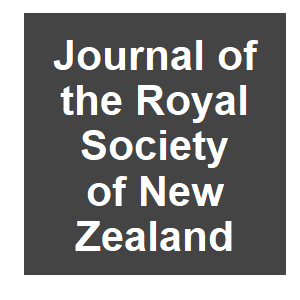
|
Gene drive and RNAi technologies: a bio-cultural review of next-generation tools for pest wasp management in New ZealandS. Palmer, P. K. Dearden, O. R. Mercier, A. King-Hunt and P. J. Lester, Journal of the Royal Society of New Zealand, 1-18. 2021.
There is a global need for novel, next-generation technologies and techniques to manage pest species. We review work on potential step-changing technologies for large landscape (>1000 hectares) pest management of social Vespula wasps. We also review M?ori perspectives on these ... Keywords: gene drive synthetic, invasive species, new-zealand, stoats |

|
Genetically-modified possums and all-in-one trapping machines: funding for new predator-free studiesA. Allott, stuff, 2021.
Research into possum genes and creating an all-in-one predator detecting, luring, and trapping machine are among a handful of projects to receive new funding to help bring them into reality. Predator Free 2050 has awarded $2.4 million in Jobs for Nature funding to six ... Keywords: gene drive synthetic, invasive species, new-zealand, stoats |

|
Knowing and Controlling: Engineering Ideals and Gene Drive for Invasive Species Control in Aotearoa New ZealandC. H. Ross, Nature Remade: Engineering Life, Envisioning Worlds, 2021.
On the islands of Aotearoa, also called New Zealand, invasive species have been a prominent and persistent concern for local ecosystems. Traditional methods of biological control, though, can be difficult to implement and often have harmful side- effects for the environment and ... Keywords: gene drive synthetic, invasive species, new-zealand, stoats |

|
Plain language summary: How do we have a public conversation about new technologies for conservation? The possibilities and pitfalls of scientific languageAnnonymous, Relational Thinking, 2021.
Having caused a catastrophic decline of animal species, people now look to new technologies to reverse the damage. Gene drive is a potential tool that could increase the proportion of male offspring in rat populations and eventually reduce their overall numbers. Some suggest this ... Keywords: gene drive synthetic, invasive species, new-zealand, stoats |

|
CRISPR and the splice to survive: New gene-editing technology could be used to save species from extinction—or to eliminate them.E. Kolbert, New Yorker, 2021.
About a year ago, not long before the pandemic began, I paid a visit to the center, which is an hour southwest of Melbourne. The draw was an experiment on a species of giant toad known familiarly as the cane toad. The toad was introduced to Australia as an agent of pest control, ... Keywords: gene drive synthetic, invasive species, new-zealand, stoats |

|
Conservation pest control with new technologies: public perceptionsE. A. MacDonald, M. B. Neff, E. Edwards, F. Medvecky and J. Balanovic, Journal of the Royal Society of New Zealand, 2021.
We conducted eleven focus groups in New Zealand to explore three questions about novel technologies (gene drive and two others for comparison of pest control tools): (1) what are the risks/benefits? (2) how do they compare to current methods? and (3) who should be represented on ... Keywords: gene drive synthetic, invasive species, new-zealand, stoats |

|
Researchers help complete world first wasp genome projectStaff, The National Tribune, 2020.
In a world first, New Zealand researchers have sequenced the genome of three wasps, two of which are invasive wasps in New Zealand, paving the way for new methods of control for these significant pests. Keywords: gene drive synthetic, invasive species, new-zealand, stoats |

|
Researchers complete world first wasp genome projectUniversity of Otago, Phys Org, 2020.
In a world first, New Zealand researchers have sequenced the genome of three wasps, two of which are invasive wasps in New Zealand, paving the way for new methods of control for these significant pests. Keywords: gene drive synthetic, invasive species, new-zealand, stoats |

|
Biotechnologies in pest wasp control: taking the sting out of pest management for Māori businesses?S. Palmer and O. R. Mercier, New Genetics and Society, 2020.
A Maori-centered mixed-method study gauged the perceptions of eight Maori businesses about the potential use of five specific new biotechnological controls in pest management. Keywords: gene drive synthetic, invasive species, new-zealand, stoats |

|
NZ’s great pest-free quest: can we get there?J. Morton, NZ Herald, 2020.
The Government has unveiled how it plans to rid New Zealand of possums, rats and stoats by 2050 – but there's no specific mention of contentious gene-editing technology that many scientists say will be needed. The Predator Free 2050 strategy, being formally launched this ... Keywords: gene drive synthetic, invasive species, new-zealand, stoats |
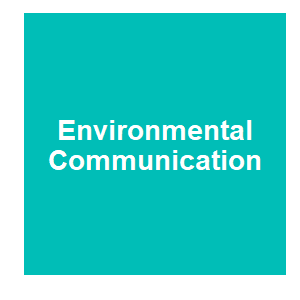
|
Public Opinion Towards Gene Drive as a Pest Control Approach for Biodiversity Conservation and the Association of Underlying WorldviewsE. A. MacDonald, J. Balanovic, E. D. Edwards, W. Abrahamse, B. Frame, A. Greenaway, R. Kannemeyer, N. Kirk, F. Medvecky, T. L. Milfont, J. C. Russell and D. M. Tompkins, Environmental Communication-a Journal of Nature and Culture, 15:1-16. 2020.
Synthetic gene drive approaches are nascent technologies with potential applicability for pest control for conservation purposes. Responsible science mandates that society be engaged in a dialogue over new technology, particularly where there exist global ramifications as with ... Keywords: gene drive synthetic, invasive species, new-zealand, stoats |
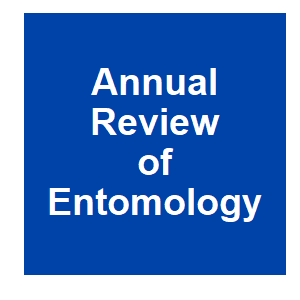
|
Invasion Success and Management Strategies for Social Vespula WaspsP. J. Lester and J. R. Beggs, Annual Review of Entomology, 64:51-71. 2018.
Three species of Vespula have become invasive in Australia, Hawai'i, New Zealand, and North and South America and continue to spread. Economically, their main negative effect is associated with pollination and the apicultural industry. Climate change is likely to exacerbate ... Keywords: gene drive synthetic, invasive species, new-zealand, stoats |

|
The potential for the use of gene drives for pest control in New Zealand: a perspectiveP. K. Dearden, N. J. Gemmell, O. R. Mercier, P. J. Lester, M. J. Scott, R. D. Newcomb, T. R. Buckley, J. M. E. Jacobs, S. G. Goldson and D. R. Penman, Journal of the Royal Society of New Zealand, 48:225-244. 2017.
Here we describe the current state of gene drive technologies and present a series of examples to examine the potential benefits and problems arising from gene drive approaches for pest control in New Zealand. Keywords: gene drive synthetic, invasive species, new-zealand, stoats |
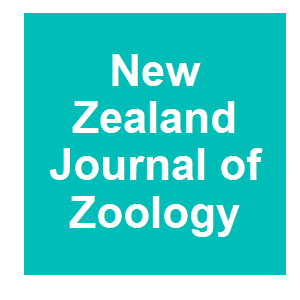
|
Trends in the development of mammalian pest control technology in New ZealandC. T. Eason, L. Shapiro, S. Ogilvie, C. King and M. Clout, New Zealand Journal of Zoology, 44:267-304. 2017.
The use of new toxins with advantages in specific settings should be complemented by improvements in resetting trap technology, barrier approaches, and novel biocontrol and genetic concepts. Sodium fluoroacetate (1080) and other important tools have been retained; we have the ... Keywords: gene drive synthetic, invasive species, new-zealand, stoats |

|
The use of gene editing to create gene drives for pest control in New ZealandRoyal Society Te Apārangi Gene Editing Panel, Royal Society of New Zealand, 2017.
to explore the implications of gene editing technology for New Zealand, the Royal Society Te Apārangi has convened a multidisciplinary panel of some of New Zealand’s leading experts to consider the social, cultural, legal and economic implications of revolutionary ... Keywords: gene drive synthetic, invasive species, new-zealand, stoats |

Contact
David O’Brochta
Foundation for the
National Institutes of Health
geneconvenevi@fnih.org
RSS

